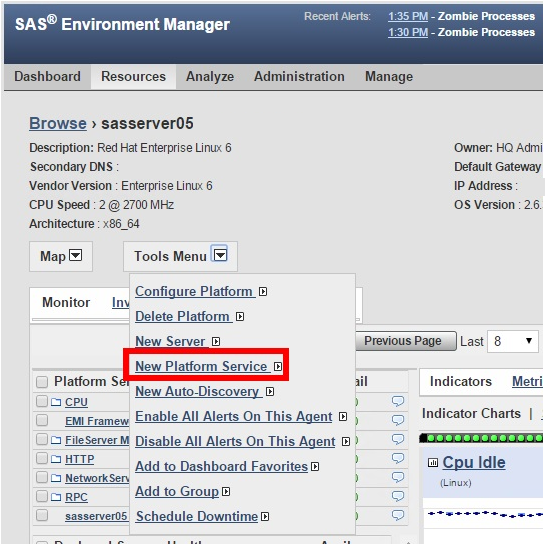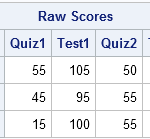All Posts

The RFC is closed during winter break, but don’t miss out on a chance to burn a few of those extra holiday calories with the RFC’s 12 Days of Fitness Workout by Pam Cole! Please check with your health care provider prior to starting a new exercise routine. Photos by Edie

As SAS administrators, I know you are as excited as I am by the ability of SAS Environment Manager to monitor, in detail, the performance of their SAS environments. Now, we have a robust tool to monitor, measure and report on the performance of the various SAS components. An added
‘Tis the season. While the season means different things to different people, its most common theme is people buying things for people. Things that become presents when they are covered in wrapping paper. Two retailers have been running television commercial campaigns this season about how presents are wrapped. One campaign

We want to extend a huge thank you to everyone who donated their leftover (and excess) Halloween candy this year, you outdid yourselves!! We tipped the scales at more than 265 pounds of candy- 45 more pounds than we collected last year! So what happened to ALL that candy? Well,

Well, Analytic Hospitality Executives, the year has once again flown by, and here we sit just before the holidays looking back on 2014, and figuring out what it all means for 2015. I traveled even more than usual this year (if that’s even possible), spending a significant amount of time

The impact of mental illness on individuals, families, the health system and even the economy is broad and significant. In this, the latest post in my mental health series, I’d like to talk about what can be done to help. Prevention and early detection are just parts of an integrated
I have a question --- do we need a logical data model for a conversion? Here are my thoughts. I believe the answer is yes if the conversion has any of the following characteristics: The target application is created in-house. This application will more than likely be enhanced in the

Flexibility and nimbleness are terms synonymous with small and mid-sized businesses. They have the ability to react quickly to changing market conditions as they are made aware of them. Traditionally these businesses have lived in the world of spreadsheets - and why not? They are easy to use, very affordable
In the last post we looked at the use case for master data in which the consuming application expected a single unique representative record for each unique entity. This would be valuable in situations for batch accesses like SQL queries where aggregates are associated with one and only one entity record.

Just yesterday, Santa called my cell phone asking for a favor... Yes, Santa has my direct line, and I owe him (he once did me a solid, back in 1984, for Christmas, scoring me an awesome Optimus Prime Transformer). That's me there in the front - sporting plaid duds and

Every time I pick up a new article about analytics, I am always disappointed by the fact that I cannot find any specifics mentioned about back-end processing. It is no secret that every vendor wishes they had the latest and greatest parallel processing capabilities, but the truth is that many
Data. It's everywhere. It can reside in many places through replication, accessibility needs or infrastructure costs. For reporting, that same data can be structurally changed (denormalized or aggregated) into additional reporting and analytic data repositories. Over time, new sources of enrichment of that data become available through traditional data sources

The application deadline for the SAS Global Forum 2015 Junior Professional Award has been extended to February 1! If you have fewer than three years’ experience using SAS in a professional setting, you’ll want to take a closer look at the requirements and apply online. Junior Professional Program Coordinators Sally

Like most programming languages, the SAS/IML language has many functions. However, the SAS/IML language also has quite a few operators. Operators can act on a matrix or on rows or columns of a matrix. They are less intuitive, but can be quite powerful because they enable you perform computations without

The first sensors appeared many decades ago, and have been around for quite some time in various forms, even though they’ve really only entered the popular vocabulary over the past few years thanks to the Internet of Things. How do sensors work? A sensor detects events, or changes in quantities, and














